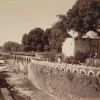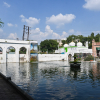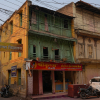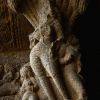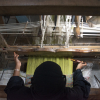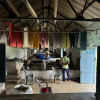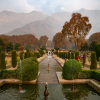Silent motion pictures were introduced to India in 1896 by the Lumière brothers, ushering in a new cultural age. Calicut experienced its first cinematic event a decade later, in 1906, with a screening of moving images in a temporary tent at Muthalakkulam Ground. The show was organised by Swamikannu Vincent, a pioneering exhibitor from Tamil Nadu, who travelled with his equipment, showcasing silent films in makeshift venues. These touring exhibitions captivated audiences in the following decades, eventually leading to the establishment of permanent cinema halls, or ‘talkies’, and distribution centres in the Malabar region.
The Era of Single-Screen Theatres
During British rule, Calicut saw the establishment of its first single-screen theatres, three of which remain active today. Among them is the iconic Radha Theatre, established in 1938, still drawing audiences to its iconic location on SM Street. Another landmark, Coronation Theatre, named in honour of the crowning of Queen Elizabeth II, underwent renovation and reopened as a multiplex in 2023. While Crown Theatre, situated in Mananchira, was the first to introduce a 70-mm screen and a Dolby sound system, setting a new standard. At the time, it was also the only theatre in the city screening English films, including Hollywood classics.
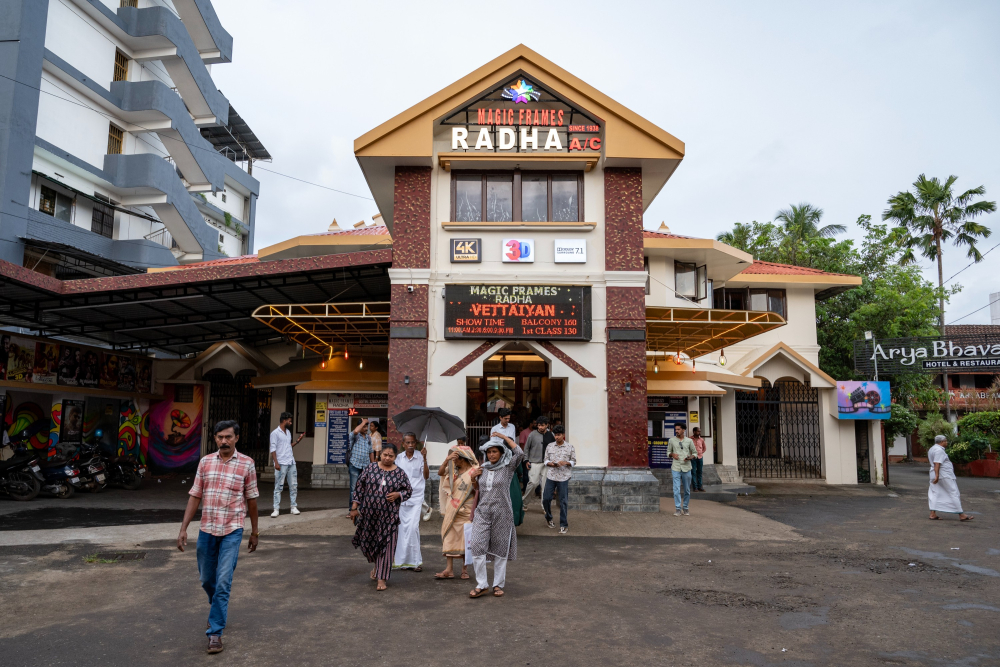
Radha Theatre in SM Street (Pictures credits: Joseph Rahul)
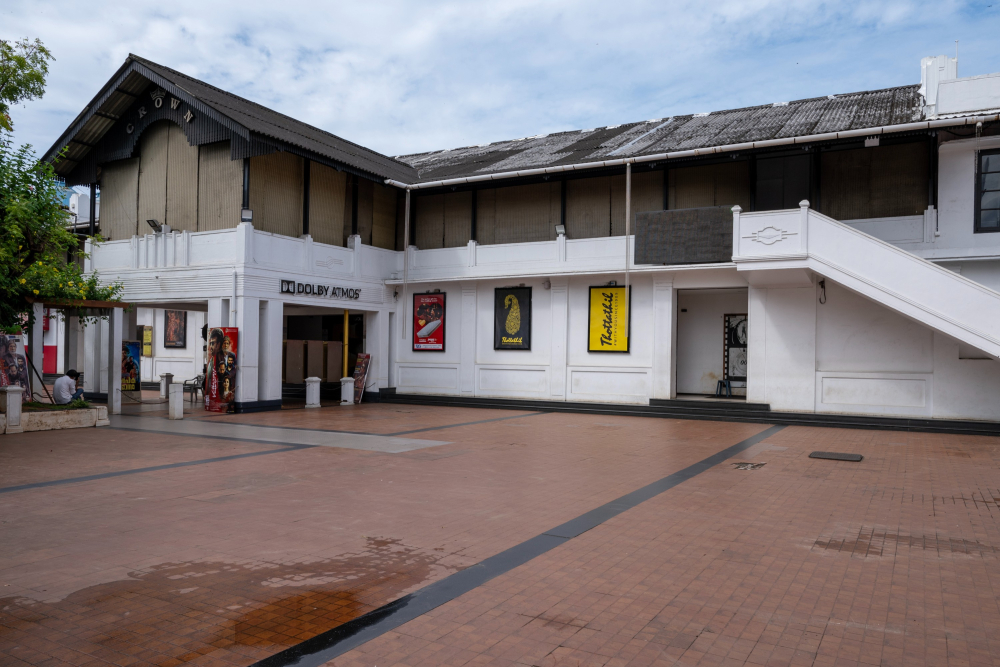
Crown Theatre in Mananchira (Pictures credits: Joseph Rahul)

The newly renovated Coronation Theatre (Picture credits: Joseph Rahul)
A long-time resident reminisces about the 1970s: ‘Crown especially attracted affluent families and college students. Before air conditioning, their doors remained open during evening shows, and you could hear the sound of passing trains. As a sports enthusiast, I also enjoyed highlights of cricket test matches screened before movies.’ Although Crown turned into a multiplex in 2012, its history is preserved through the display of an old Westrex 70-mm projector at its entrance. A plaque next to it reads: ‘From a modest 35 mm to the Cinemascope to 70 mm, I have evolved to give the ardent movie-goer many experiences and memories to cherish…’
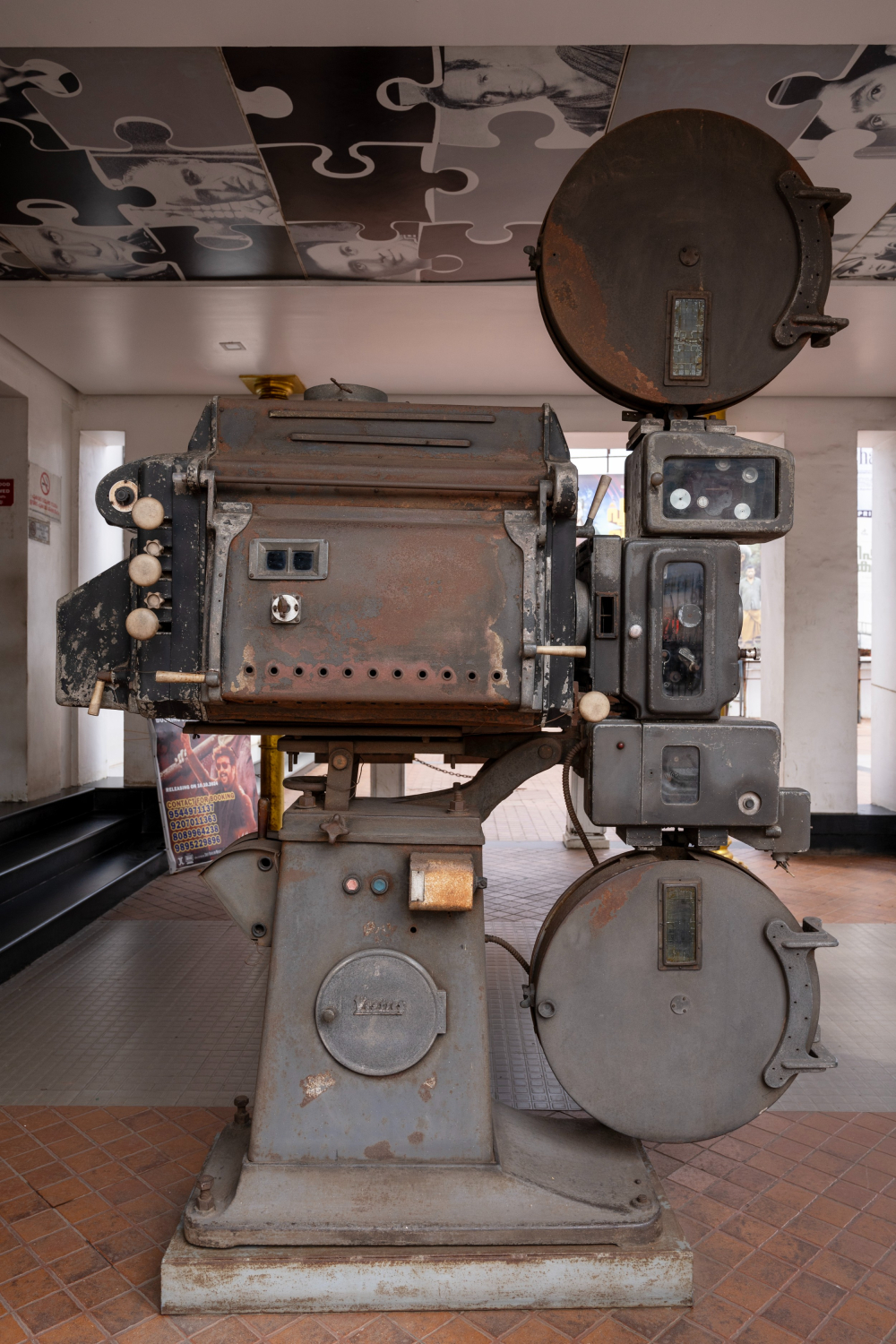
A Westrex 70-mm projector on display at the entrance of Crown Theatre (Picture credits: Joseph Rahul)
As cinema gained popularity, more theatres emerged. Davison Theatre, for instance, was established by the same company that opened Kerala’s first theatre in Thrissur. The 1970s saw the advent of Apsara and Sangam theatres, inaugurated with much fanfare—Apsara by actors Prem Nazir and Urvashi Sharadha, and Sangam by Maruthur Gopalan Ramachandran (famously known as M.G.R). Both theatres introduced air conditioning, a novelty at the time.
Beyond technology and comfort, theatres hoped to draw in crowds through unique experiences. Sangam, for example, was promoted as the only theatre in the South with an intricately designed Plaster of Paris ceiling and walls. Other notable single-screen theatres of the era included Pushpa and Geeta. Apsara reopened in 2024 as ‘Magic Frames Apsara’ a year after its closure. However, very few single-screen theatres have survived, with modern multiplexes dominating Kozhikode’s landscape today.
Filmmakers From Kozhikode
Kozhikode’s artists and filmmakers have made notable contributions to the Malayalam film industry. Aloysius Vincent, director and cinematographer, had a prolific career spanning over four decades. For instance, his directorial debut Bhargavi Nilayam (1964) became a landmark in the horror genre, with the screenplay penned by the legendary Vaikom Muhammad Basheer. The film brought together Kozhikode-based talents: composer M.S. Baburaj, lyricist P. Bhaskaran and actor Kuthiravattam Pappu. Like Pappu, several theatre actors from Kozhikode went on to become cinema stalwarts, acting in hundreds of films. Kunjandi, Nellikode Bhaskaran, Shantha Devi, K.P. Ummer, Balan K. Nair and Mamukkoya became household names, each leaving an indelible mark on Malayalam cinema.
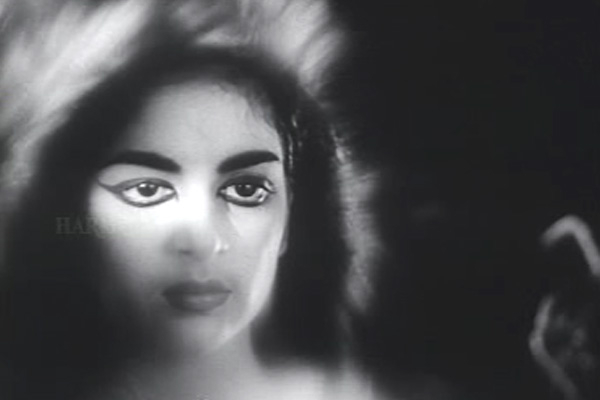
A still from the film 'Bhargayi Nilayam' (Picture source: avincentfilmmaker)
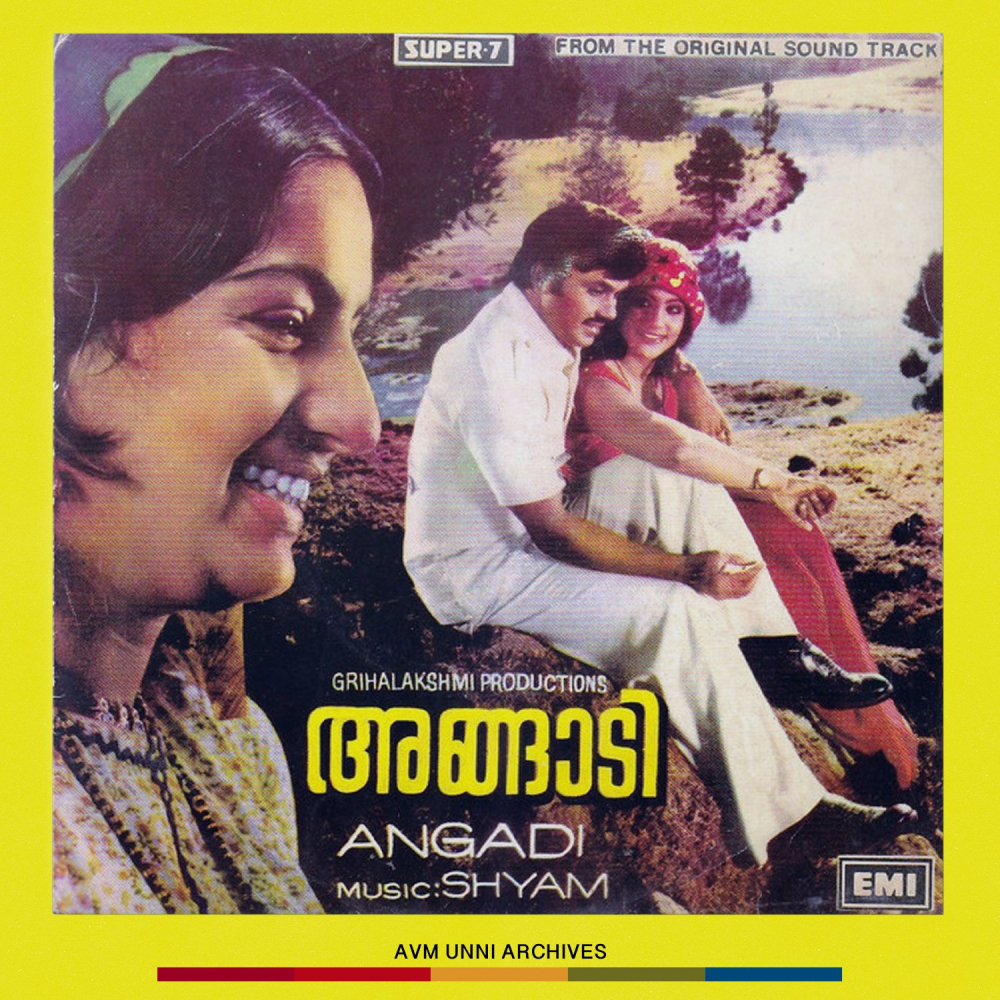
The CD cover of the film 'Angadi' (Picture source: pbs.twimg.com)
Among the filmmakers who shaped the industry, Irruppam Veedu Sasidaran, better known as I.V. Sasi, was a defining figure from the 1970s to the 1990s. Starting out as an art director, Sasi transitioned to filmmaking with his directorial debut Utsavam (1975). His signature style blurred the lines between commercial and artistic cinema. While in the city, he occupied Room 106 in Hotel Maharani, which became famous as the site where many of his films took shape. Sasi’s movies would steer the careers of the biggest stars in the industry—he was the first to direct Mammootty as a lead actor in the film Thrishna (1981) and notably directed Devaasuram (1993), one of Mohanlal’s career highlights. While he worked consistently with Malayalam’s leading actors, he also directed the likes of Kamal Haasan, Rajnikanth and Rajesh Khanna. Kozhikode’s literary icon M.T. Vasudevan Nair worked with Sasi on numerous films. Celebrated screenwriter and fellow Kozhikodan, T. Damodaran, also played a crucial role in the success of Sasi’s films. Together, they delivered hits such as Angadi (1980), set in Kozhikode’s Valiyangadi market and produced by the city-based Grihalakshmi Productions, founded by P.V. Gangadharan in 1977.
For the Love of Cinema
For Kozhikode’s cinephiles, movie theatres were only one of many ways to indulge their love for cinema—the city offered other opportunities to engage with films.
Deedi Damodaran, a filmmaker and one of the founding members of the Women in Cinema Collective (WCC), began her journey in cinema as a school student, assisting her father, T. Damodaran, as a scribe. She takes pride in watching films on their release days and has meticulously collected the tickets for each movie. She was part of the film society movement: ‘In those days, we didn’t have access to international films or classics except through film societies. We had the Ashwini Film Society, we had Odessa...Even before these societies came to be, my father used to take his students to nearby talkies to watch films. He was also a football commentator, and since films didn’t have subtitles back then, he would do live translations, announcing the dialogues from behind the screen.’
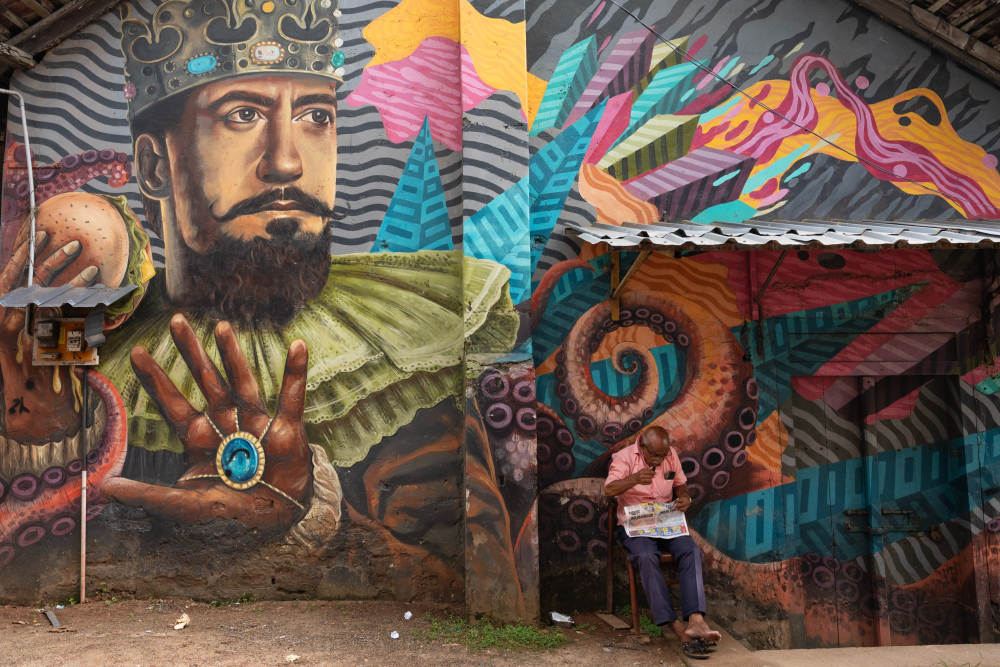
A warehouse covered in wall art featuring a Hollywood star (Picture credits: Joseph Rahul)
The Ashwini Film Society, founded in 1967 by film journalist Chelavoor Venu and a group of professors and enthusiasts, was one of the city’s pioneering film clubs. Their first screening was the Bengali classic Pather Panchali. Activist and filmmaker Odessa Sathyan earned his nickname through his association with the Odessa Collective, an initiative that aimed to engage with the community through cinema. Such societies played a pivotal role in fostering a rich film culture.
In the 1980s and 1990s, video cassette libraries became a haven for cinema enthusiasts. ‘The library near my house only had Hindi, Tamil and Malayalam films,’ Damodaran recalls. ‘However, there were two libraries in the city that rented international films, especially Hollywood movies. Renting a cassette cost around INR 10 per day, and you had to pay for every extra day.’ Popular rentals of the time included Cheers Video Parlour, Four Seasons, Bismi and Masters, among others.
In December 1994, Kozhikode hosted the first International Film Festival of Kerala (IFFK), commemorating the 100th anniversary of cinema with 100 screenings. Since then, the IFFK has been held annually in Thiruvananthapuram. While film festivals are occasionally organised today, Kozhikode has gained more recognition for the Kerala Literature Festival (KLF). Even so, the city’s cinephiles remain active, finding newer ways to keep the love of cinema alive—whether through its theatres, discussion forums or emerging collectives that carry the legacy of the past.
This essay has been created as part of Sahapedia's My City My Heritage project, supported by the InterGlobe Foundation (IGF).


